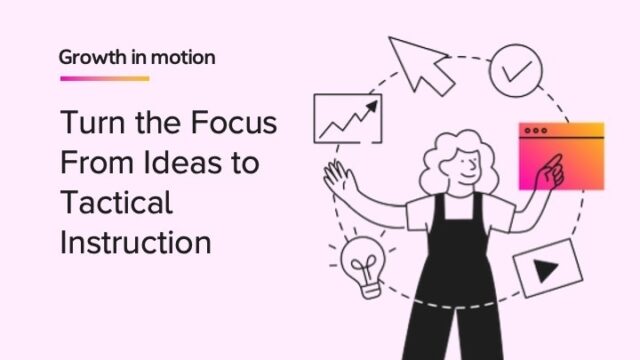
Do you have a PBIS program at your school but feel like it could be better? If so, you’re not alone. A recent study noted several obstacles to implementing PBIS, including state, district, and administrator buy-in, teacher training, high-need student issues, and lack of parent or community involvement.
Still, you can improve your PBIS program by using student surveys to get feedback from students about their experiences. This can help you identify areas where your PBIS program needs improvement. Then you can make changes accordingly. Want to know how? Keep reading to learn more about tips for using PBIS student surveys to improve your PBIS program.
What is PBIS, and why is it important for schools?
Positive Behavioral Interventions and Supports (PBIS) is a framework for improving school climate and student behavior. It uses a data-driven decision-making process that typically has the following goals:
- Identify the factors that contribute to positive student behaviors.
- Develop intervention strategies to increase those positive behaviors.
- Measure the impact of those interventions.
PBIS is important because it can help create a positive school climate where all students feel safe and supported. When students feel like they belong and are valued, they are more likely to succeed academically and socially. PBIS can also reduce disciplinary problems and improve school safety.
How can student surveys help improve PBIS programs in schools?
PBIS surveys allow teachers and administrators to set measurable, data-related goals. They improve PBIS by creating a manageable cycle of information that you can use as feedback from students about their experience in class, at home with parents via email correspondence (or other means), during clubs/interest groups meetings, and more. Ultimately, this can lead to new discussions about how you can improve PBIS teaching methods.
Survey results also help schools identify areas where adjustment is required in order to meet their students’ needs better throughout the year. Setting up consistent PBIS student surveys for feedback throughout the year offers educators insight into how they can further improve PBIS programming.
Additionally, surveying students can allow educators to better understand how well the PBIS program is working for different groups of students. It helps to pinpoint any specific groups that are not benefiting from the program as intended.
Finally, surveying students can help educators gather feedback on the effectiveness of individual components of the PBIS program, as well as on overall satisfaction with the program.
What are the steps to improving PBIS Programs with Student Surveys?
Ready to move forward with PBIS surveys? Here are some basic steps to get you started.
1. Decide on the goals of your PBIS program and survey
Are you looking to improve the school climate? Reduce suspensions and referrals? Gather data to inform instruction? Conduct a brainstorming session with teachers and school leaders to draft your PBIS goals.
2. Draft survey questions that will help you measure goals
Once you have your goals, align questions with them and measure behaviors that you are trying to change. Need help getting started? Click here for a PBIS survey example.
3. Make sure that the survey is appropriately designed to measure students’ perceptions of PBIS
Your survey should be brief, easy to understand, and relevant to your specific PBIS program.
3. Test the surveys with a small group of students
Test your questions on a small sample of students. Get feedback on the questions and make revisions as needed.
4. Administer surveys to all students in your school or district
Administer the survey regularly (at least twice a year) in order to track changes in students’ perceptions over time. Collect and analyze the survey data. Use it to make decisions about your PBIS program moving forward.
5. Use the survey results to guide refinement of your PBIS program
The survey results will help guide future planning and refinement of your PBIS strategy by providing insight into which areas of school life are most important to students and staff. The results will also help identify which types of interventions are most effective at improving student behavior.
What are some common PBIS survey questions you can use to assess effectiveness in schools?
Some common survey questions to assess the PBIS effect are as follows:
- On a scale from 1-5, 5 being most often, how effective do you think positive reinforcement systems (PBIS) improve your behavior?
- On a scale from 1-5, 5 being most often, how frequently do staff use positive reinforcement systems (PBIS) to improve your behavior?
- On a scale from 1-5, 5 being most often, how frequently do you receive rewards or acknowledgment for exhibiting appropriate behavior?
- On a scale from 1-5, 5 being most often, how often are school rules and expectations communicated to you?
- On a scale from 1-5, 5 being most often, how effectively do school staff respond to misbehavior in your classroom?
Some other common survey questions include:
- How do teachers support your PBIS program in school?
- How engaged are you in your learning (very engaged, somewhat engaged, not engaged)?
- How well do you get along with your peers (very well, somewhat, not well)?
- How well do you understand your school’s behavioral expectations (very well, somewhat, not well)?
- What are some behaviors you consider to be strengths? Please list them.
- What are some behaviors you struggle with in school? Please list them.
How can school administrators use survey results to make necessary changes to their PBIS programs?
First, surveys can help identify which students and staff members are most likely to benefit from the program. Surveys can also help administrators measure the program’s effectiveness and determine whether to make changes. Additionally, you can use survey results to create training materials and provide feedback to staff members.
School administrators can use survey results to make necessary PBIS changes by looking at the data and identifying areas where more support is needed.
For example, if a majority of students report feeling unsafe in the hallways, then the school might need to consider increasing security staff or installing security cameras. If a large percentage of students report being bullied, then the school might need to beef up its anti-bullying initiatives.
By taking a close look at the survey results, administrators can get a clear picture of what’s working and what needs improvement, and make changes accordingly.
Overall, survey results can play a valuable role in helping administrators fine-tune PBIS programs and ensure that they positively impact students and staff members.
What are the potential drawbacks of using student surveys to measure PBIS effectiveness in schools?
As with anything else, there are a few potential drawbacks to using student surveys to measure PBIS.
First, students may not be honest in their responses. They may feel pressured to give positive feedback or may not understand the questions.
Second, surveys can be time-consuming and expensive to administer.
Third, the survey results may not be representative of the entire student body.
Finally, surveys only provide a snapshot of how students feel at a particular moment and do not necessarily reflect long-term trends.
What are other survey types?
In addition to student surveys, there are several other PBIS survey types that can cater to certain individuals and topics:
- PBIS surveys for teachers, staff and parents help to gather feedback about school climate and the effectiveness of the PBIS program, each from different but equally important perspectives.
- School climate surveys ask more specific questions about the overall school environment, such as how well-supported and safe students feel at school, how often teachers intervene in student conflicts, and how often staff have the resources they need to do their jobs.
- Student discipline surveys ask questions about specific student behaviors, such as whether students feel they receive fair treatment when disciplined, how often kids get into fights, and how often teachers feel like they need to send students out of class for disciplinary reasons.
- Staff satisfaction surveys ask questions about working conditions at schools, such as whether staff members feel their workloads are reasonable or whether the existing systems of support are enough.
A few things to keep in mind when creating your PBIS survey
- Make sure you align the survey with your PBIS goals and objectives.
- Keep the survey short and focused. You don’t want your respondents to get bogged down in too much detail.
- Be clear about what you are trying to learn from the survey. This will help you design questions that will get the information you need.
- Make sure your questions are clear and easy to understand. Respondents should answer them without difficulty.
- Think about how you would use the results. This will help you determine what type of questions to ask and how to present the data.
Wrapping up
School administrators have an important job in ensuring that all students have a positive school experience, and PBIS programs are one way to make schools more effective and equitable for all students.
PBIS student surveys can be an essential tool for assessing the effectiveness of PBIS programs and making necessary changes or improvements. By asking the right questions, school administrators can gather meaningful feedback from students that helps refine and strengthen their PBIS programs.
This article was adapted from a blog post initially developed by the education technology company Classcraft, which was acquired by HMH in 2023. The views expressed in this article are those of the author and do not necessarily represent those of HMH.
***
Find more lesson plans and classroom resources on Shaped.














